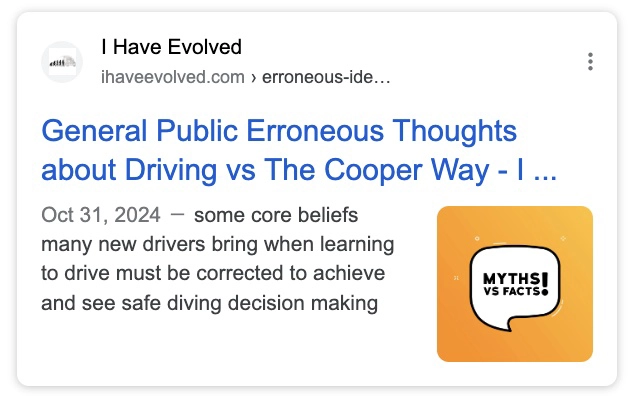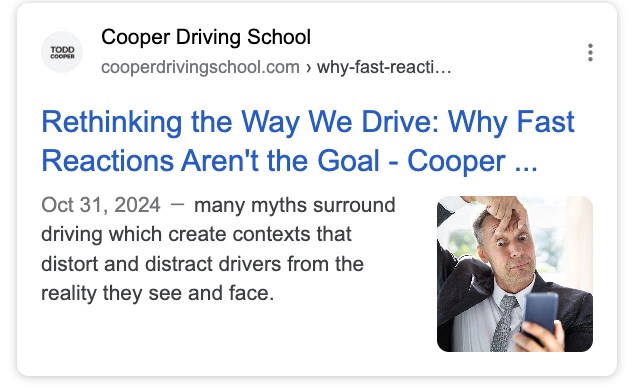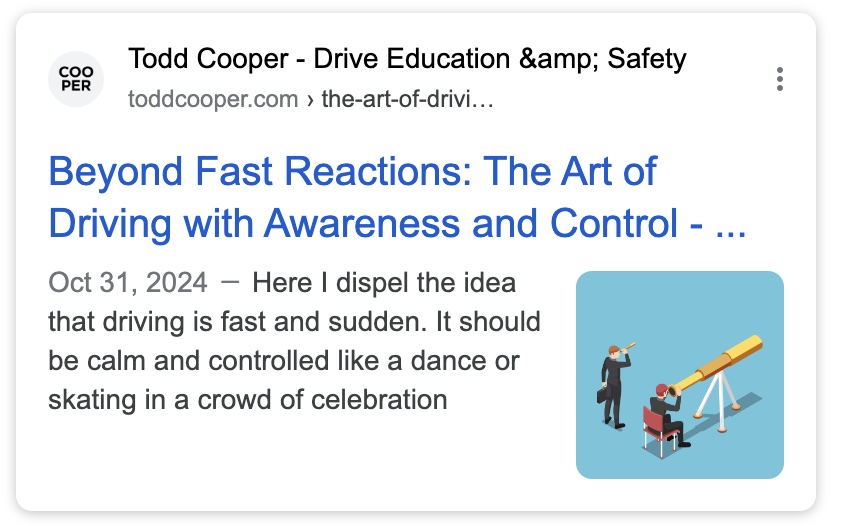by Todd Cooper
Hey, I’m Cooper, and for the last five+ years, I’ve worked with 565+ clients to help them overcome their fear and anxiety around driving. I’ve seen it all—folks who’ve had bad experiences in cars, traumatic memories from family yelling in the backseat, or just a deep belief that they’ll never be able to drive. My job is to help you face those fears, learn the skills to drive safely, and get you to a place where you can hit the road with confidence. And let me tell you, the success stories are incredible—over 90% of the clients I know about are out there driving today, managing the real risks of the road like champs. But I want to be upfront with you: this journey isn’t easy, and I’m not a miracle worker. Let’s talk about what it really takes to get there, the struggles you might face, and why a small handful of folks either don’t make it with me or drift away without updates.
Success Is Possible—But It Takes Hard Work
I’ve helped over 560 people get behind the wheel and drive independently, even with all the anxiety and fear they started with. That’s a huge number, and I’m so proud of every single one of them. They’re out there, driving to work, taking their kids to school, or just enjoying the freedom of the road. But here’s the thing: getting there wasn’t a walk in the park. Most of my clients have cried, had nightmares, felt frustrated, or wanted to give up at some point. Research shows that driving anxiety often stems from traumatic experiences, like accidents, or even social fears, like being judged by others on the road. It’s not just about learning to steer or knowing the road signs; it’s about rewiring how you think and feel about driving. Taylor, J. E., Stephens, A. N., & Sullman, M. J. M. (2021). Psychometric properties of the Driving Cognitions Questionnaire, Driving Situations Questionnaire, and Driving Behavior Survey. Transportation Research Part F: Traffic Psychology and Behaviour, 76, 202-214.
I’m here to guide you through that, step by step. We’ll work on car control, understanding the rules, handling traffic, and spotting your mistakes so you can fix them. I also prersent video clips to show you exactly what’s happening—it’s like a mirror that helps you see what’s really going on, not just what your anxious brain remembers. Most clients love this because it helps them grow, but it’s not always easy to look at your mistakes. It takes courage, and I’ll be right there with you, cheering you on.
The Journey Can Be a Rollercoaster—And That’s Okay
I want to be real with you: this process can be tough. You might feel overwhelmed, scared, or like you’re failing sometimes. A lot of my clients hit what I call “the line”—that moment where the fear and anxiety bubble up so much that they break down, cry, or get super frustrated. And that’s okay! It’s part of the process. Studies suggest that gradual exposure to driving situations, like what we do together, is effective for reducing anxiety, but it can be emotionally intense. My goal is to help you get close to that line—where you’re facing your fears—but keep you just on the safe side so you can keep learning and growing. Kaussner, Y., et al. (2020). Treating patients with driving phobia by virtual reality exposure therapy – a pilot study. PLOS ONE, 15(1), e0226937.
Here’s the tricky part: I can’t always tell when you’re about to hit that line unless you tell me. I wish I could see inside your brain to know how you’re feeling, but since I can’t, I rely on you to speak up. I’ll ask you things like, “How’s your anxiety level right now, on a scale of 1 to 10?” or “Are you feeling calm or stressed?” I’ve got tools to help us figure it out together, but you’ve got to be honest with me. If you keep pushing through silently when you’re overwhelmed, you might explode—and I’ve seen that happen. It’s not fun for either of us, but it’s a risk I take because I know that getting you to face your fears is the only way to get past them.
Why Some People Don’t Make It (And Why It Hurts Me Too)
Out of the 565 clients I’ve worked with over the last five years, I know for sure that three—about 1%—didn’t make it through with me and openly struggled. They walked away after hitting their breaking point, unable to accept that the change had to come from them—not from me, not from the car, not from the world around them. They wanted a magic fix for their fear without doing the hard work of looking at their own habits, beliefs, or mistakes. They didn’t want to see the videos of their driving where I pointed out dangerous errors, like drifting into another lane or missing a stop sign. Research indicates that some individuals resist treatment for driving anxiety when it challenges their self-perception or requires confronting uncomfortable truths, like driving errors. To them, my feedback felt like, “You’re bad,” instead of, “Let’s fix this together so you can be safe.” Clapp, J. D., et al. (2011). The Driving Behavior Survey: Scale construction and validation. Journal of Anxiety Disorders, 25(1), 96-105.
When those three clients hit their breaking point, they lashed out. They said things like, “This is too hard,” “I’ll never figure it out,” “I’m too old,” or “Your service doesn’t work—you’re not giving me what I wanted.” And then they walked away, blaming everything outside themselves including me for their struggles. Let me tell you, that hurts. I feel shame, guilt, and sadness when it happens. I pour my heart into helping every single client, and when someone “throws the baby out with the bathwater”—and I get tossed out too—it’s a tough day for me. Open communications is so so critical for success here. And that is a tough requirements for some.
But there’s another group—about 10% of my clients, or roughly 56 people—whose outcomes I don’t know. These folks moved away, stopped training with me, or just stopped updating me, and I don’t know if they eventually succeeded in driving or not. Maybe some felt overwhelmed like the 1% who lashed out but never told me. Maybe others ran out of money, moved out of town, or found another trainer. I see this as a good thing in a way—I don’t own my clients, and my work isn’t a cage. Each person is responsible for their own journey, and many factors are at play. I’m okay with not knowing their endings because it’s part of respecting their freedom. Still, I wonder sometimes how they’re doing, and I hope they found their way to the road.
The Reality of Driving: It’s Risky, But Not as Scary as You Think
Here’s something I want you to know: the fears you’re feeling are often way bigger than the actual risks. In British Columbia, 99.9% of drivers don’t die in a car crash when they head out, and 99.9% don’t even get injured. Sure, driving is a big responsibility—there’s always some risk, and you’ve probably seen scary news stories about accidents. But the catastrophes your brain might be imagining? They’re not the reality for most drivers. Research supports this: driving anxiety often amplifies perceived risks, making them seem far worse than the actual statistical likelihood of harm. My job is to help you see that, to understand the real risks, and to build the skills and confidence to manage them. It’s about getting you to a place where you can say, “I know driving is risky, but I’ve got this. I can handle it.” Taylor, J. E. (2018). The extent and characteristics of driving anxiety. Transportation Research Part F: Traffic Psychology and Behaviour, 58, 70-79.
You’ve Got to Take Responsibility for Your Journey
Here’s the biggest thing I’ve learned: I can’t change you—you’ve got to do that part yourself. I’m not a miracle man who can erase your fears with a snap of my fingers. I can give you the tools, the support, and the guidance, but you’ve got to be willing to face your fears, look at your mistakes, and work on changing how you think and feel. That’s why communication is so important. If you’re struggling, tell me! If you’re overwhelmed, let me know so we can slow down. The clients who didn’t make it with me—or those in the 10% who drifted away without a word—often kept quiet until they couldn’t take it anymore, and by then, they were too upset to keep going. I wish they’d told me sooner—I could’ve helped them adjust before things fell apart. Studies emphasize that active participation and open communication in therapy are critical for overcoming anxiety, including driving-related fears. Choosing Therapy. (2024). Overcoming Driving Anxiety: 11 Tips from an Expert. Retrieved from www.choosingtherapy.com.
There’s Hope if You Don’t Give Up
Here’s the good news: if you stick with it, the success is worth it. Over 90% of the clients I know about are driving today because they didn’t give up. They faced the tears, the frustration, and the nightmares, and they came out the other side stronger. I’ve seen people who thought they’d never drive—folks who’d been terrified for 20 or 30 years—get behind the wheel and feel proud, free, and safe. That’s what keeps me going, even on the tough days when a client walks away or drifts off without a word. Research backs this up: therapy, especially when tailored to individual needs, helps around 80% of people significantly reduce driving anxiety symptoms, often leading to long-term success. Choosing Therapy. (2024). Overcoming Driving Anxiety: 11 Tips from an Expert. Retrieved from www.choosingtherapy.com.
So, if you’re thinking about starting this journey, know that it’s going to be hard, but it’s also going to be worth it. I’ll be here to support you every step of the way, but you’ve got to be ready to do the work and speak up when you need to. A few might not make it with me, and some might move on without telling me how it ends—and that’s okay, it’s part of the risk we take—but for the vast majority, there’s a light at the end of the tunnel. Let’s get you driving, together!
REFERENCES
Below are the detailed references used to support the arguments in this document, along with a short blurb explaining how each source backs up your approach to helping clients overcome driving anxiety.
Taylor, J. E., Stephens, A. N., & Sullman, M. J. M. (2021). Psychometric properties of the Driving Cognitions Questionnaire, Driving Situations Questionnaire, and Driving Behavior Survey. Transportation Research Part F: Traffic Psychology and Behaviour, 76, 202-214.
Source Data: Published in a peer-reviewed journal, this study investigates the psychometric properties of three driving anxiety measures, highlighting the multifaceted nature of driving anxiety, including cognitive, behavioral, and emotional components.
Blurb: This research supports your argument that driving anxiety is complex, often rooted in traumatic experiences or social fears, like being judged by others. It underscores the need for a tailored approach, like the step-by-step guidance you provide, to address these varied aspects and help clients rewire their thoughts and feelings about driving.
Kaussner, Y., et al. (2020). Treating patients with driving phobia by virtual reality exposure therapy – a pilot study. PLOS ONE, 15(1), e0226937.
Source Data: A peer-reviewed pilot study published in PLOS ONE, exploring the efficacy of virtual reality exposure therapy (VRET) for driving phobia, showing significant reductions in anxiety symptoms through gradual exposure.
Blurb: This study validates your method of gradually exposing clients to driving situations to face their fears, as you describe helping clients stay just on the “safe side” of their anxiety threshold. It confirms that exposure, even if emotionally intense, is a key component of reducing driving anxiety, aligning with your rollercoaster analogy.
Clapp, J. D., et al. (2011). The Driving Behavior Survey: Scale construction and validation. Journal of Anxiety Disorders, 25(1), 96-105.
Source Data: Published in a peer-reviewed journal, this study develops the Driving Behavior Survey, identifying problematic behaviors in anxious drivers, such as performance deficits and resistance to feedback.
Blurb: This research explains why some clients, like the 3% who openly struggled with you, resist when confronted with their driving errors. It supports your observation that resistance to feedback or discomfort with self-perception can hinder progress, emphasizing the need for clients to take responsibility for their growth.
Taylor, J. E. (2018). The extent and characteristics of driving anxiety. Transportation Research Part F: Traffic Psychology and Behaviour, 58, 70-79.
Source Data: A peer-reviewed study analyzing the prevalence and characteristics of driving anxiety in a general population, noting that fears often exaggerate actual risks.
Blurb: This study backs your point that clients’ fears are often disproportionate to the real risks of driving, like the 99.9% safety stats you cite for British Columbia. It reinforces your approach of helping clients understand and manage actual risks to build confidence.
Choosing Therapy. (2024). Overcoming Driving Anxiety: 11 Tips from an Expert. Retrieved from www.choosingtherapy.com.
Source Data: A comprehensive online article published on August 22, 2024, detailing evidence-based strategies for overcoming driving anxiety, including therapy and communication.
Blurb: This source supports your emphasis on client responsibility and communication, noting that therapy helps 80% of people reduce driving anxiety symptoms. It aligns with your high success rate (over 99% of known outcomes) and your encouragement for clients to speak up about their struggles to tailor the process effectively.
© 2024 Todd Cooper – Quality Driving Lessons. All materials are copyright-protected. DOWNTOWN VANCOUVER BRITISH COLUMBIA CANADA







Comments are closed